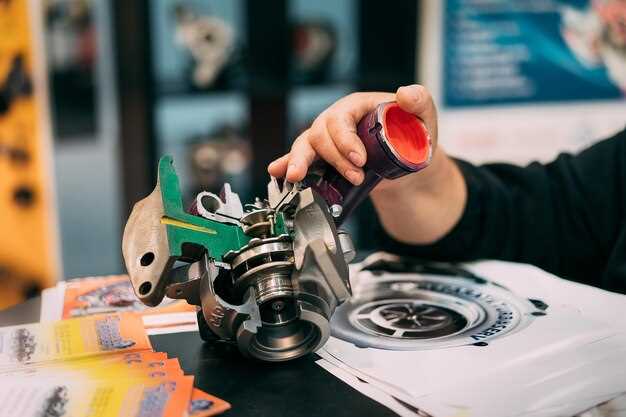
Race day is a whirlwind of excitement and adrenaline, but the key to success lies in meticulous preparation. Properly organizing your spare parts is essential to ensure smooth operations during the event. The way you prep and arrange these crucial components can make a significant difference in your performance on the track.
Having a well-structured system for your spare parts not only saves time but also minimizes stress. When every item is in its designated place, you can easily access what you need without hesitation. This organization boosts your efficiency, allowing you to focus more on strategy and less on searching for tools and components.
Additionally, a pre-race inventory of your spare parts helps you identify any missing items that could hinder your performance. By implementing smart strategies for organizing these components, you’ll be better equipped to handle unforeseen circumstances during the race. A little prep goes a long way in creating an environment where you can excel, both as a driver and a team member.
Creating a Visual Inventory System for Quick Access
Efficient spare parts management on race day is essential to minimize downtime and ensure quick repairs. A visual inventory system provides a strategic approach for organizing components, allowing team members to swiftly locate and access what they need during high-pressure moments.
Start by categorizing spare parts based on their purpose and frequency of use. Create clearly labeled bins or sections for essential components such as tires, brakes, and engines. Utilize color-coded labels or tags to easily distinguish between different categories, enabling quick identification under stress.
Next, develop a visual map or layout of the storage area. This should include the location of each part, enabling team members to know precisely where to look for what they need. Consider using large, easy-to-read signage that can be quickly scanned, even from a distance.
Implement a digital inventory tracking system that supplements your visual approach. Utilize tablets or smartphones to allow team members to check stock levels in real-time, ensuring that everyone is updated on spare parts availability. This can also help prevent running out of crucial items inadvertently.
Lastly, conduct a prep session before race day to familiarize your team with the visual inventory system. Walk through the layout, emphasizing the importance of returning parts to their designated spots after use. A well-rehearsed plan ensures that everyone can act quickly, allowing your team to focus on what really matters – improving performance on the track.
Allocating Dedicated Spaces for Different Types of Parts

On race day, effective organization of spare parts is critical for optimal performance and quick accessibility. Allocating dedicated spaces for different types of parts can greatly enhance efficiency, minimize confusion, and streamline operations during the event.
Firstly, categorize spare parts based on their function and frequency of use. Essential components such as tires, brakes, and engine parts should have easily accessible locations. Designate specific areas for these high-priority items, ensuring they are stored in clearly labeled containers or shelves to prevent any search delays.
Secondly, consider the size and intricacy of each part. Larger or bulky items may require designated floor space or dedicated shelving units, while smaller components, like bolts and screws, can be organized in small drawers or containers. This differentiation not only helps in saving space but also allows for faster retrieval when needed.
Additionally, implementing a standardized labeling system can further enhance organization. Each section should be clearly marked, indicating which parts are stored there. Using color codes can add an extra layer of clarity, making it easier to identify specific categories at a glance.
Establishing a routine for organizing and replenishing spare parts before race day is also vital. Regularly assess inventory levels and ensure that all parts are in good condition, replacing any worn or damaged items as necessary. This proactive approach helps maintain readiness and prevents critical failures during the race.
In conclusion, allocating dedicated spaces for different types of spare parts plays a vital role in the success of race day operations. By categorizing components, utilizing effective storage solutions, and maintaining organization, teams can ensure they are prepared for any situation that may arise on the track.
Establishing a Last-Minute Check List for Race-Day Readiness

Preparing for race day requires meticulous planning, especially when it comes to spare parts and equipment. A well-structured checklist can ensure that you have everything necessary to maintain peak performance during the event. Here’s a guideline to help you develop your last-minute prep checklist.
- Review Essential Parts:
- Brakes: Inspect pads and discs for wear.
- Tires: Check pressure and tread depth.
- Fuel: Ensure you have enough fuel and spare jerry cans.
- Battery: Verify charge levels and connections.
- Belts & Hoses: Look for cracks and wear. Replace if necessary.
- Gather Safety Equipment:
- Helmet and fire suit: Check for cleanliness and damage.
- Gloves and shoes: Ensure they meet safety standards.
- First aid kit: Verify it’s fully stocked.
- Compile Tools for On-Site Repairs:
- Wrenches and sockets: Ensure all necessary sizes are included.
- Jack and stands: Confirm proper functioning and stability.
- Spare screws, bolts, and zip ties: Have various sizes available.
- Check Communication Devices:
- Two-way radios: Test battery life and signal strength.
- Mobile phones: Ensure they are charged and have emergency contacts saved.
- Plan Logistics:
- Confirm transport for equipment and parts.
- Set up a designated area for easy access to spare parts.
- Ensure team communication channels are established.
By systematically reviewing this list, you can ensure that all critical parts and equipment are accounted for, allowing for a smoother and more successful race day experience.



